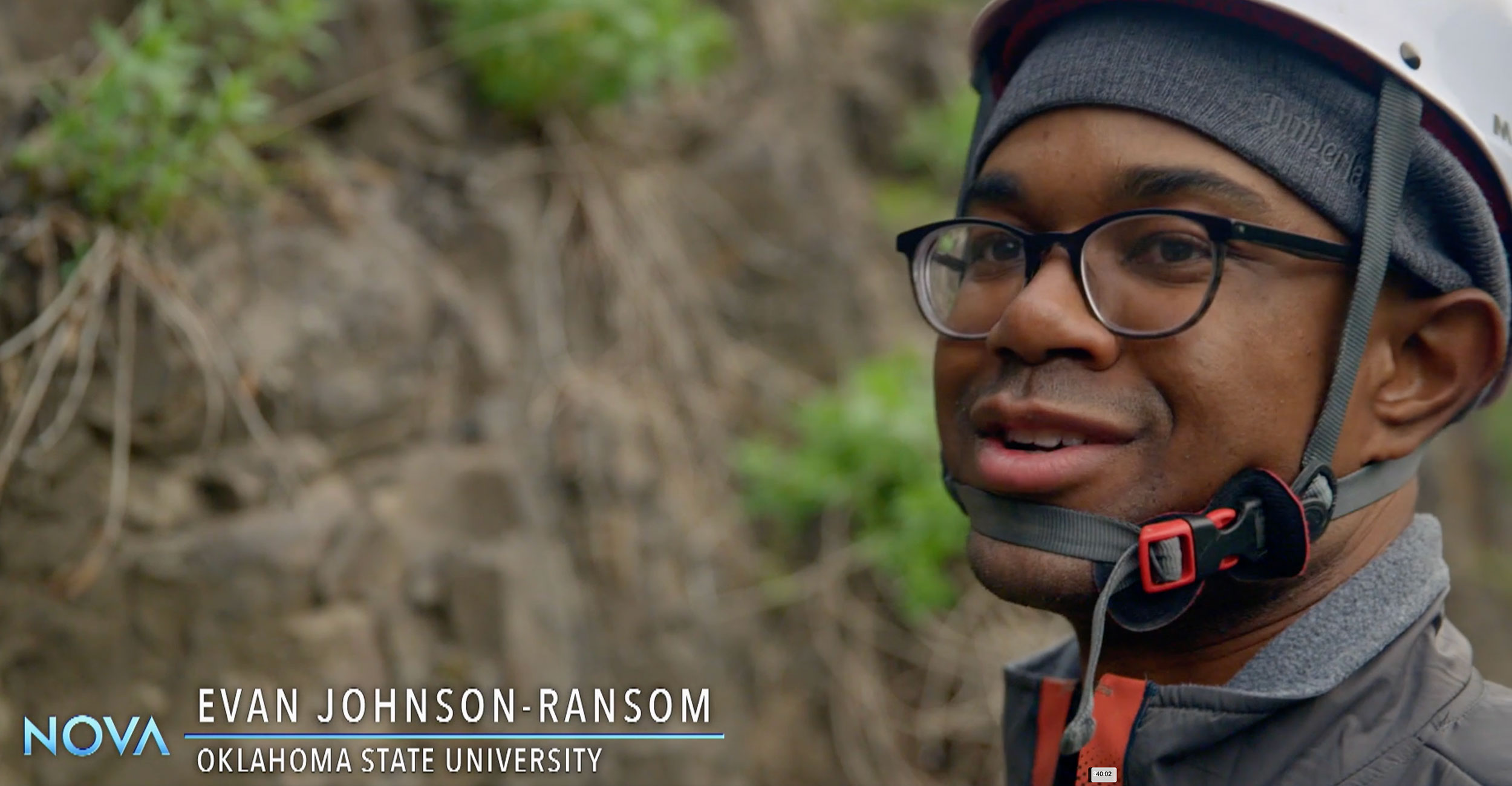
Paleontology alum featured in dinosaur documentary
Saturday, January 29, 2022
Media Contact: Sara Plummer | Communications Coordinator | 918-561-1282 | sara.plummer@okstate.edu
For OSU Center for Health Sciences alumnus Evan Johnson-Ransom, taking part in paleontology field research in Alaska’s Denali National Park last summer was unlike anything he had done before, including being filmed for a dinosaur documentary.
Johnson-Ransom, who graduated in December 2021 with a Master of Science from OSU-CHS’ School of Biomedical Sciences Anatomy and Vertebrate Paleontology program, had done field work before in Montana and Wyoming.
“There my meals were provided, and I lived in a cabin. In Alaska, this was the first time I had stayed in the great outdoors. I slept in a tent and cooked meals for our group,” he said. “While I was there, Denali had 24/7 sunlight.”
Johnson-Ransom was part of a team of fellow graduate students and paleontologists studying how dinosaurs lived and survived in the colder region that is now Alaska. The field work, research and findings were all documented in the NOVA special “Alaskan Dinosaurs” that aired on PBS in January.
Johnson-Ransom said dinosaurs lived in a variety of climates, hot and cold, and different species had different behaviors to adapt. Paleontologists found evidence of meat-eating dinosaurs having a feathery covering to keep themselves warm, some herbivores feeding on petrified wood to survive when vegetation died, and even smaller dinosaurs burrowing into the ground to possibly hibernate.
“Finding dinosaurs in colder climates like Alaska and Antarctica shows they were adaptive and suggests they were possibly warm-blooded animals. Dinosaurs were very complex animals."
In the documentary, Johnson-Ransom assisted in locating and analyzing probable dinosaur tracks that had been fossilized on cliffs in Denali National Park. Paleontologists and scientists also excavated bones and fossils on Alaska’s North Slope, the northern-most area of the U.S.
“I liked how the research was portrayed in the NOVA documentary. It showed how the paleontologists conducted their research by looking for dinosaur bones and assessing the environment they lived in, in addition to highlighting the paleontologists’ research interests and expertise,” he said.
Johnson-Ransom said it was also nice to see himself featured in the documentary, especially when discussing tyrannosaur trackways with paleontologist Patrick Druckenmiller, Ph.D., who is also curator of Earth Science at the University of Alaska Museum of the North.
“All of my friends and family enjoyed watching it,” he said. “Some commented on how good it was to see a person of color be featured in a paleontology documentary.”
Watch the NOVA special “Alaskan Dinosaurs” now on pbs.org/wgbh/nova.
